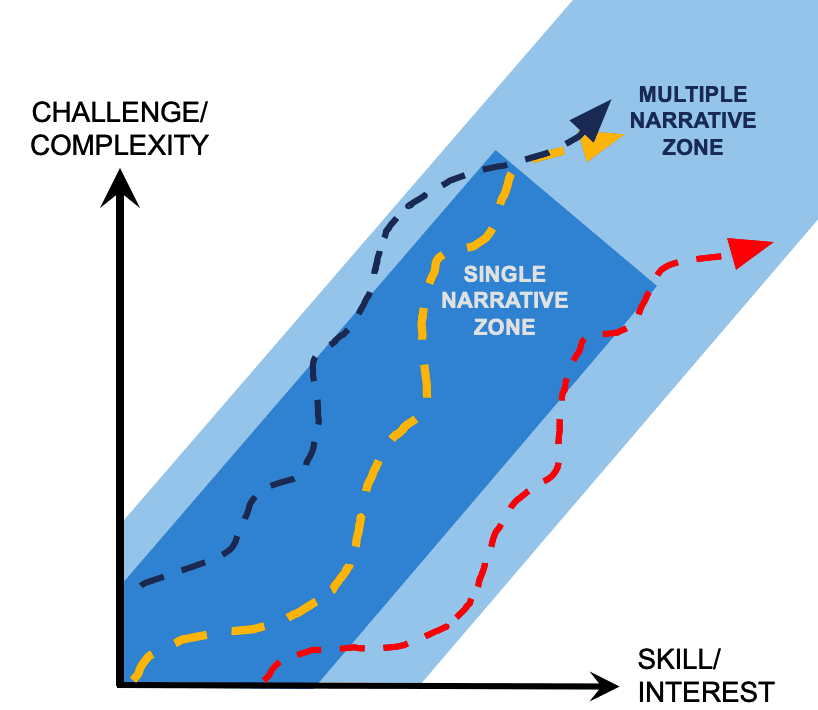Continued from Screen size Changes the Meaning and Impact of Content.
There is something particularly alluring about stories that take place outside of our known world. Historical, fantasy and sci-fi stories take the consumer on a delicate balance of fact and fiction to create something that feels right. The illusion of reality wrapped in fiction triggers comparisons between “then” and now as we project ourselves into the story and psychologically try out different roles. Outlander, for example, is a historical drama with a twist of time-travel. In the narrative, one of the protagonists, Clare, is doing exactly what the audience is doing—going back in time. It is, as my daughter would say, very meta.
We may be familiar with a particular history, time or have fantasies about future worlds, but entertainment fills out the social and human motives and the characters’ emotions. Similarly, sci-fi and fantasy explore a vast array of setting as petri dishes for human behavior full of alluring images and aesthetics. The similarities allow us to emotionally experience the differences. Realism is seldom as complex or gritty as real life might be in those worlds, unless, of course, that is the point and the audience opts-in for a dystopic narratives when, nevertheless, a (f not the) hero still wins. Think Mad Max: Fury Road. It all works as long as the focus stays on the characters’ story arcs with settings and costumes that trigger the imagination (the key to narrative transportation), and, offer a romantically archetypal vision of other times. Netflix, Hulu and Amazon prime are all VRBO for the brain.
Most stories are built on characters cast from clear archetypal—the hero, the partner, the villain, the guide, the caretaker, the wiseman, the lover. The more unknown the world, the clearer the archetypes need to be to provide us with cues as to which characters should be the targets of our emotional investment. Universal themes from Joseph Campbell’s hero’s journey– love, betrayal, redemption, innocence, justice, sacrifice, and transformation– all provide cognitive anchors to translate even the most bizarre into something we know and understand.
The trend toward designing for transmedia content—recognizing that we experience stories across media channels and not just within one—has spawned a wave of complex dramas that weave multiple concurrent threads and multiple heroes’ journeys to create a larger universe of experience and multiple access points to provide fodder for sustainable emotional engagement. Shows like Game of Thrones craft a wider narrative zone that allows for surprising plot twists that don’t violate the canon and help keep the audience in the story (Rutledge, 2019). This is an advantage because while we may be attracted to a story because of special effects or extraordinary costumes, we stay because of human connection. And it is exactly that humanity makes stories so powerful, impactful and rewarding.
Maintaining a Narrative Zone: Multiple vs. Single Narratives

Transmedia has inspired a new trend in complex storytelling–multiple narratives and multiple journeys to a common resolution in time, but with independent outcomes. This creates a wider narrative zone with more emotional entry points (shown in light blue) that increases tolerance of narrative deviation within the canon and supports more sustainable engagement.
References
Rutledge, P. (2019). Transmedia Psychology: Creating Compelling and Immersive Experiences. In M. Freeman & R. R. Gambarato (Eds.), Routledge Companion to Transmedia Studies. London: Routledge.

 Dr. Pamela Rutledge is available to reporters for comments on the psychological and social impact of media and technology on individuals, society, organizations and brands.
Dr. Pamela Rutledge is available to reporters for comments on the psychological and social impact of media and technology on individuals, society, organizations and brands.